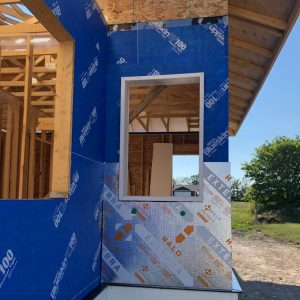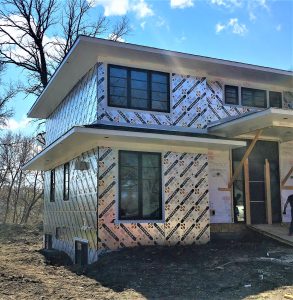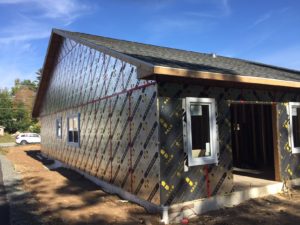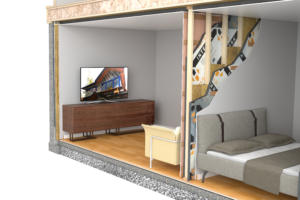When we discuss insulation, it’s usually in the context of energy efficiency in cold climates. And it makes sense, as Northern energy codes typically dictate higher insulation requirements than those in milder, warmer, or even hotter climates.
But hot and warm regions — which make up a large chunk of the US — are forced to use colossal amounts of energy to keep buildings cool in their scorching summer months.
This post will talk about the value of continuous insulation (CI) in the country’s hot and warm climate zones.
Southern Climate Zones Require Proper Insulation to Reduce Cooling Costs
Like their chilly Northern neighbors, Southern regions of the continental US also rely heavily on conditioning systems to maintain comfortable indoor air temperatures.
The only difference — while the cooler parts of the country burn gas to keep homes warm, homes in hot climate zones need air conditioning to keep their occupants cool through the summer months.
It’s no wonder that even the hottest climate zones in California, while some zones also mandate a layer of continuous insulation that’s at least R-5.
These R-value requirements may seem better suited for the country’s colder parts and are arguably a product of the Golden State’s progressive energy efficiency policies. But they reflect a simple truth — air conditioners, like furnaces, can burn a hole in their owners’ wallets without efficient home insulation.
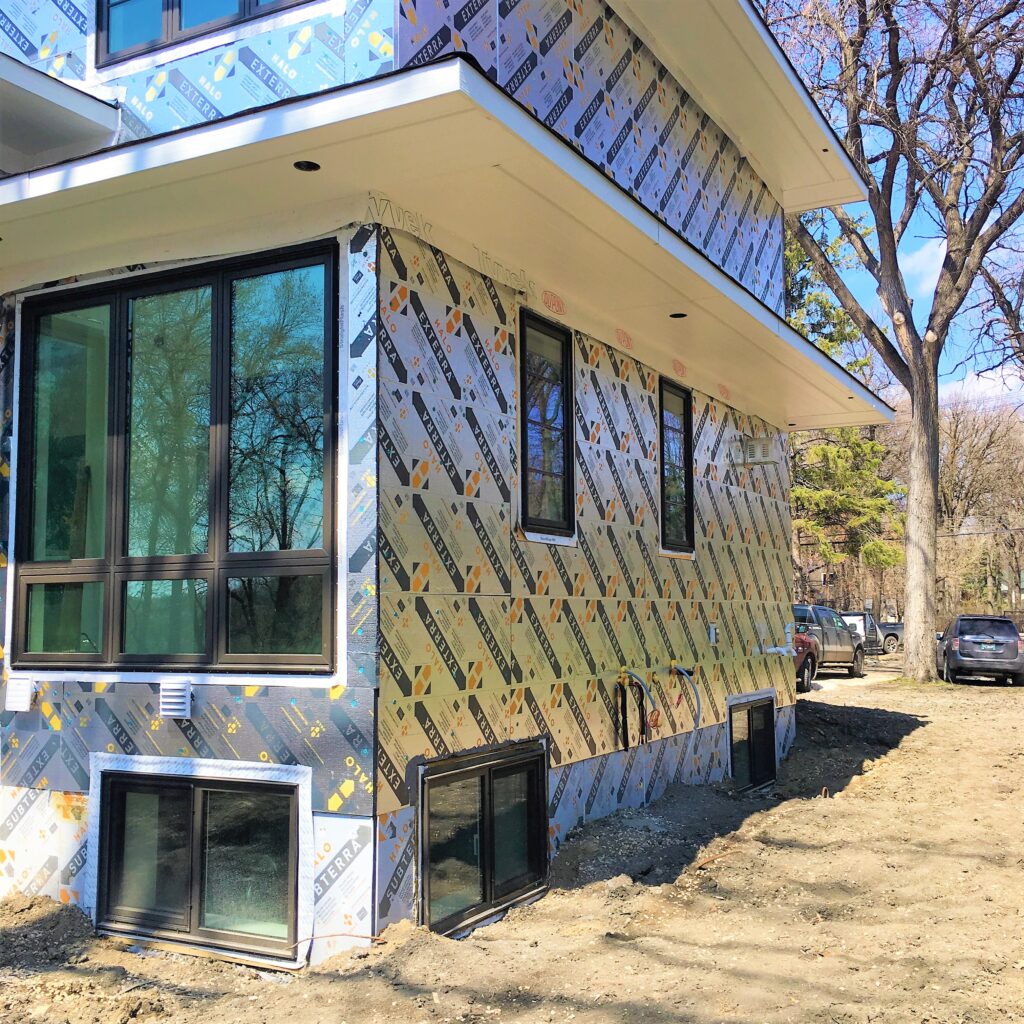
Whether you’re in San Diego, Orlando, or Savannah, if your home is not properly insulated, your temperature settings may look like this:
- 66℉ in winter — because it costs too much to crank the heat to 68℉
- 76℉ in summer — because cooling to 73℉ is just too expensive
In both scenarios, you’re sacrificing comfort because you can’t justify the cost of adequate conditioning.
But the good news is, a simple layer of CI — like Halo’s Exterra — can increase your home’s R-Values to a point where air conditioning can operate under a lower load and thus consume less energy.
This way, you’d get a narrower range between your preferred and cost-efficient heat thermostat settings. In fact, adding a 1.25-inch of CI to your home’s exterior can give your walls’ R-values a whopping 34% boost and eliminate your need for using house wrap!
How CI Can Reduce Strain on Air Conditioning
Adding a layer of CI to the exterior of above-grade walls does 2 things — it eliminates thermal bridging and creates thermal lag.
Thermal bridging is the process by which travels between a home’s exterior and interior via envelope components with high conductivity, such as studs, sill plates, and window and door frames.
Thanks to thermal bridging, a wall cavity-filled with batt insulation loses a good portion of its thermal resistance.
CI, like Exterra, on the other hand, gets installed over the building elements that cause thermal bridging, thus eliminating the process and curbing heat transfer inside a building in the summertime.
It’s a simple way to save on energy — no thermal bridging means less heat flowing inside a home, which translates to lower air conditioning costs.
What’s more, CI products like Halo’s Exterra series also add to the walls’ thermal mass or their ability to store heat.
Because of this phenomenon, indoor air temperature can stay constant longer when outdoor temperatures soar — like during a sun-filled summer afternoon. The process gets reversed in winter when abruptly cold outside temperatures don’t have an immediate cooling effect on the home’s indoor climate.
Thanks to the high thermal mass provided by CI layers like Exterra, air conditioners can take more time to start working on hot summer days, while furnaces stay idle longer in winter. This reduced strain on conditioning systems can lead to substantial energy savings for a home’s dwellers.

Don't miss a thing!
Subscribe for exclusive content, insider industry news and limited edition webcasts.
CI May Make It Easier to Meet Local Codes
Many local codes across the US — such as those in California’s marine climates — already require CI to be used in above-grade walls.
Other jurisdictions provide an option for meeting their code requirements by using CI on the exterior with a lower R-value batt insulation on the interior. For builders, this flexibility presents a stellar way to save — adding CI is typically a cheaper strategy for hitting the desired R-values than stuffing stud bays with more batt. You can check out your compliance options here.
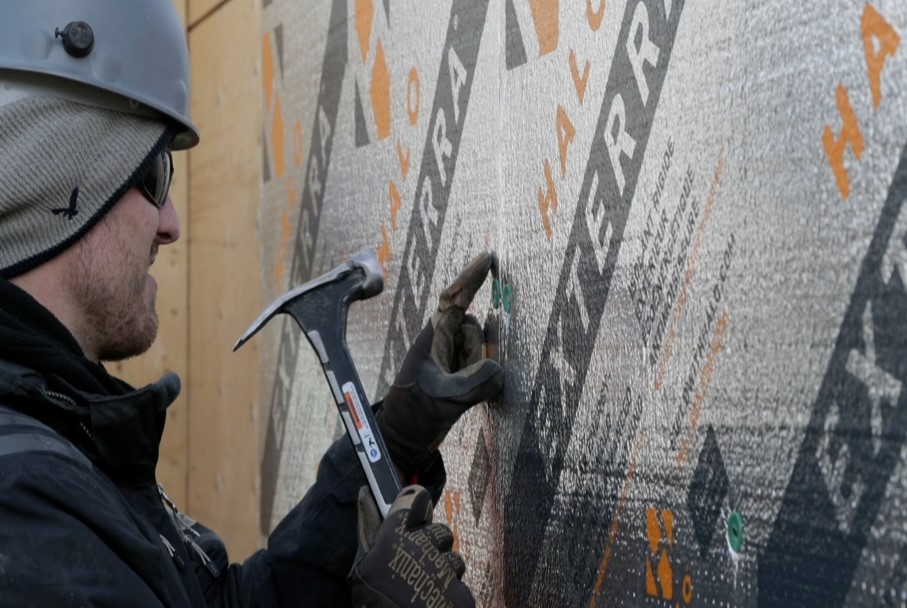
CI Can Also Help To Prevent Mold Growth
Chilled interiors and scorching hot outdoors create the perfect conditions for condensation to form in a home’s wall cavities. When this process recurs for a while, the resulting moisture buildup can cause mold outbreaks.
These can spread unchecked inside the walls and lead to various health issues, such as allergies and respiratory conditions. By applying a layer of CI to exterior walls, you move the dew point — the place where condensation appears — outside the wall cavity and prevent mold growth.
Wrapping It Up
Air conditioners can burn through hundreds of dollars monthly when trying to keep a poorly insulated home comfortably cool in some of the country’s hottest areas. That’s why insulation is just as effective at curbing energy costs in the hot Southern regions of the US as it is up in the Canadian North.
Applying a layer of CI like Halo’s Exterra offers a great opportunity to reduce the home’s energy consumption and prevent unhealthy mold outbreaks. It’s also an opportunity to meet stringent new energy codes without breaking the bank.

